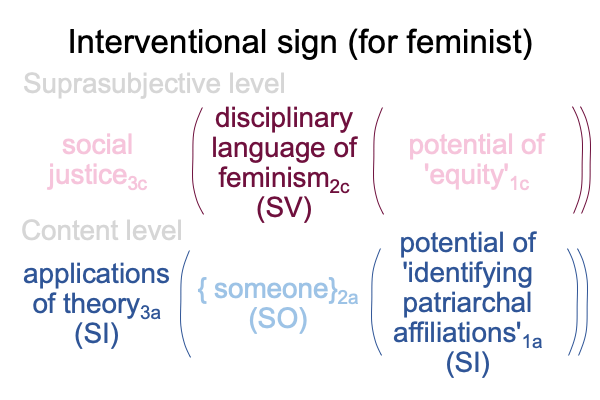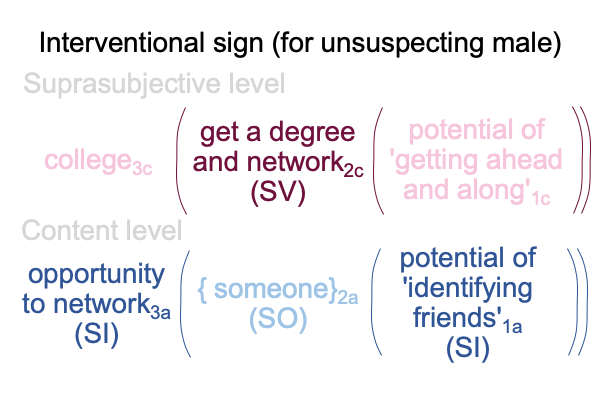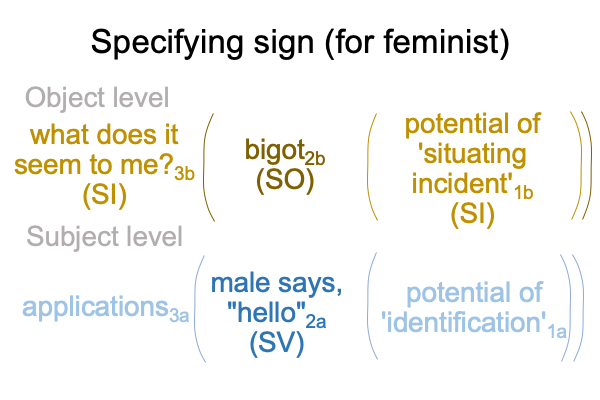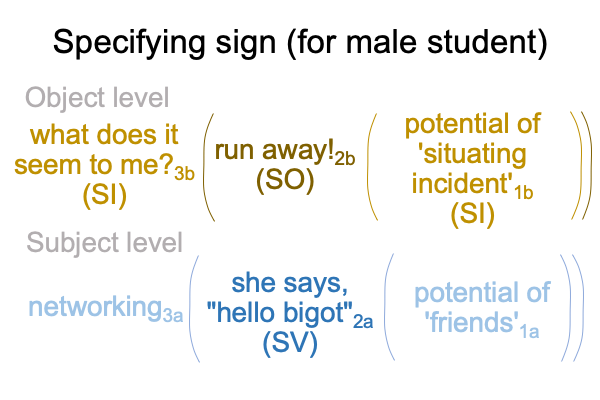Looking at John Deely’s Book (2010) “Semiotic Animal” (Part 21 of 22)
0164 In chapter twelve, Deely suggests that the new definition of the human being (as a semiotic animal) is beyond patriarchy and feminism.
Well, it is beyond social constructivism, critical theory and social justice, as well.
See Looking at Gad Saad’s Book (2020) “Parasitic Minds” in Razie Mah’s blog for April 2023.
So, this examination of Deely’s book suggests that Deely’s formulation accounts for the notions of patriarchy and feminism.
Why?
Because “patriarchy” and “feminism” participate in the objective world of an ideological constellation, called Big Government (il)Liberalism.
0165 A student recently complained to me, “Every feminist I meet sees only what she wants to see.”
But, the opposite is the case.
As far as he is concerned, a feminist only sees what she does not want to see.
0166 Consider the perspective level of feminist indoctrination. The category-based nested form says (more or less), “The normal context of social justice3c brings the disciplinary language of feminism2c, which virtually contextualizes the analysis of critical theory2b and the results of social constructivism2a, into relation with the potential of ‘equity’1c“.
0167 The disciplinary language of feminism2c is the sign-object of an exemplar sign.
It2c is also the sign-vehicle for an interventional sign.
0168 Here is a picture of that interventional sign.

This interventional sign shows that the student’s intuition is on target, but, as noted, the target is the opposite of what the student’s intuition says.
The sign-object of the interventional sign is empty2a, because the feminist is waiting, like a spider with its web, for someone to volunteer to serve as the content-level actuality2a that her normal context3a and potential1a are waiting for.
Her interventional sign-vehicle cannot be sensed by the approaching male college student. That does not mean it2c is not there. It is just not part of the objective world of the naive male college student.
0169 Well, the male also has a perspective-level nested form, which is not so explicitly honed, but is more implicitly abstracted. The normal context of college3c brings the actuality of getting a degree and of networking2c into relation with the potential of ‘getting along and getting ahead’1c.
Consequently, his interventional sign is more like an invitation for interaction, like a raven landing nearby in hopes that someone will toss it a treat.

0170 As soon as the male student says hello, the feminist identifies him as a bigot.

She then gives him a clue as about her formal approach and final intentions.
What does he hear?

0171 Talk about objective worlds in collision!
The indoctrinated person who is trained in explicit abstractions will always win in a spontaneous encounter with a person guided by implicit abstractions.
But, the male student reflects about his encounter, leading him to come up with his explicit abstraction, that the feminist sees what she wants to see.
The irony is that she does not want to meet a bigot, she wants to meet someone who satisfies her academically trained expectations.
